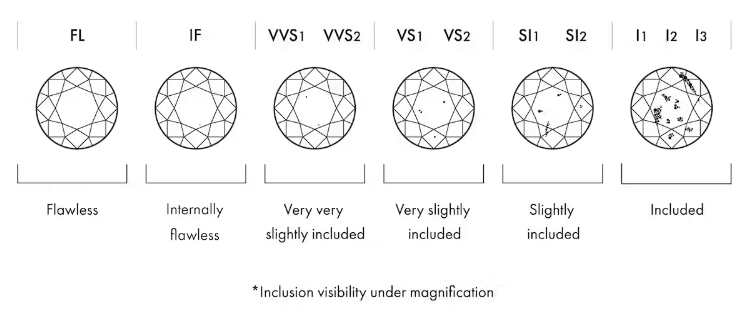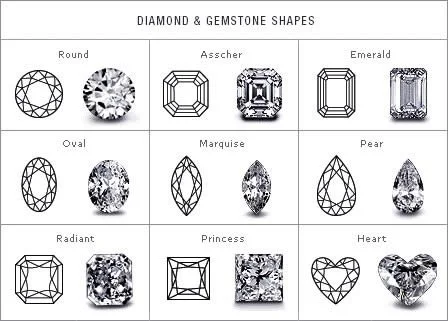Next Chapter Rings
Our expert team at Next Chapter Proposals is here to help. From understanding the 4Cs (Cut, Color, Clarity, Carat) to exploring different styles and settings, we'll guide you through the process of finding a ring that symbolises your commitment and showcases your partner's unique style.
The 4C’s
Cut.
The cut of a diamond refers to its proportions, symmetry, and the quality of its facets. The cut has the most significant impact on a diamond's sparkle and brilliance. A well-cut diamond will reflect and refract light in a way that maximizes its sparkle, whereas a poorly cut diamond may appear dull. The cut is graded from Excellent, Very Good, Good, Fair, to Poor. Aim for a diamond with an Excellent or Very Good cut for optimal brilliance.
Colour.
The colour of a diamond is graded on a scale from D (colourless) to Z (noticeable yellow or brown tint). The less colour a diamond has, the higher its grade and value. Colourless diamonds (grades D-F) are highly desirable and generally more expensive. Diamonds in the near-colourless range (grades G-J) has a good balance of quality and value.
Clarity.
Clarity refers to the presence of internal or external flaws, known as inclusions and blemishes, respectively. Diamonds are examined under magnification to determine their clarity grade. The clarity scale ranges from Flawless (no inclusions or blemishes visible under 10x magnification) to Included (inclusions visible to the naked eye). While flawless diamonds are rare and valuable, diamonds with slightly lower clarity grades (e.g., Very, Very Slightly Included) can still appear eye-clean and offer better value.
Carat.
Carat is the unit of measurement for a diamond's weight. The carat weight influences the size and appearance of the diamond. Generally, larger diamonds tend to have a higher carat weight and are considered more valuable. However, it's important to note that carat weight alone doesn't determine a diamond's quality; the other 3C's also play significant roles.
Shape.
Round: The most classic and popular shape, featuring a round outline.
Oval: has an elongated, elliptical form. They can create an illusion of longer fingers and provide excellent brilliance.
Radiant: a rectangular or square diamond with trimmed corners, brilliant faceting, and a versatile, dazzling appearance.
Asscher: Similar to the emerald cut, the Asscher cut is a square shape with step-cut facets. It has a distinctive, vintage appeal.
Marquise: A boat-shaped diamond with pointed ends. Marquise-cut diamonds can appear larger than other shapes of the same carat weight.
Princess: A square or rectangular shape with pointed corners. Princess-cut diamonds are known for their sharp, clean lines and brilliant faceting.
Emerald: This rectangular or square shape has stepped facets, known as the "step cut." Emerald-cut diamonds are elegant and offer a unique play of light and dark planes.
Pear: Resembling a teardrop, pear-shaped diamonds have a rounded end and a pointed end. They offer a combination of the round brilliant and marquise shapes.
Heart: Two symmetrical halves to form one romantic look. It is an alteration to the pear shape.
Engagement Ring Form:
Need help with designing the perfect ring? First, help us out with filling out this form and we can start the design process with you. Once you submit your form, we will email you with a catalogue to see some designs. Otherwise, we can start from scratch and customise a ring for you.
Once the design is confirmed, it will take at least 6 weeks for the ring to be made.







